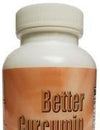Several factors contribute to atherosclerosis (deposits in the arteries).
Initially the endothelium which is the inner lining of the blood vessel wall is injured. This can be caused by substances in cigaret smoke, damage from elevated glucose levels(Wang J, et al. 2014), chronic inflammation(Montecucco F, Mach F, 2008), oxidized LDL cholesterol(Trpkovic A, et al. 2014), elevated blood pressure(Hollander W,1976) and oxidative stress(Alexander RW,1995).
More and more research is now documenting chronic low grade inflammation as a major risk factor.
When the endothelium is injured inflammation is triggered and white blood cells are attracted to the area together with platelets to repair the damage. Small LDL cholesterol particles which becomes oxidized together with clotting substances (fibrinogen) and other chemicals will bind together at the site and get buried in the vascular wall (endothelium). A fibrous cap is formed on top which can work for a while, even if it obstructs part of the artery, as long as this fibrous cap does not rupture. If it rupture, this highly inflammatory mix forms a clot, and if it is big enough, it may completely obstruct the blood flow and result in a heart attack.
How do you know if you are at risk for atherosclerosis (deposits in the arteries)?
You can have lab tests done and check your fasting blood glucose, Hemoglobin A1C, hs-CRP(an inflammatory marker), cholesterol, LDL, HDL and triglycerides. You can also check LDL and HDL particle size as well as LDL particle number, and also other things if you want to be really thorough. Checking for inflammation and how many LDL particles you have in your blood are emerging as some of the more important things you should check for.
There is however also a very easy way to get an idea about the thickness of the inner layers of the the carotid artery, the intima-media. That’s the artery going up to your brain.
You can measure your waist and divide that with your height. A waist to height ratio of more than 0.5 has been found to be significantly associated with an increase in carotid intima-media thickness(Ren C, et al. 2014). This was documented in a fairly large study of 3381 participants were the carotid artery intima-media thickness was measured with high resolution ultrasound and correlating it with waist to height measurements.
Most of us have a certain amount of buildup in the arteries.
The good news is that you can do a lot to prevent atherosclerosis and even reverse it. Research has shown that by eating the right type of food, exercising and incorporating meditation, it has been possible to reverse atherosclerosis(OrnishD, et al. 1990).
I will explain more how food can reverse atherosclerosis in the next article, but if you want to get started right away, here is a link to a program which will explain and show you how to eat by incorporating the information in the studies producing the best results.






